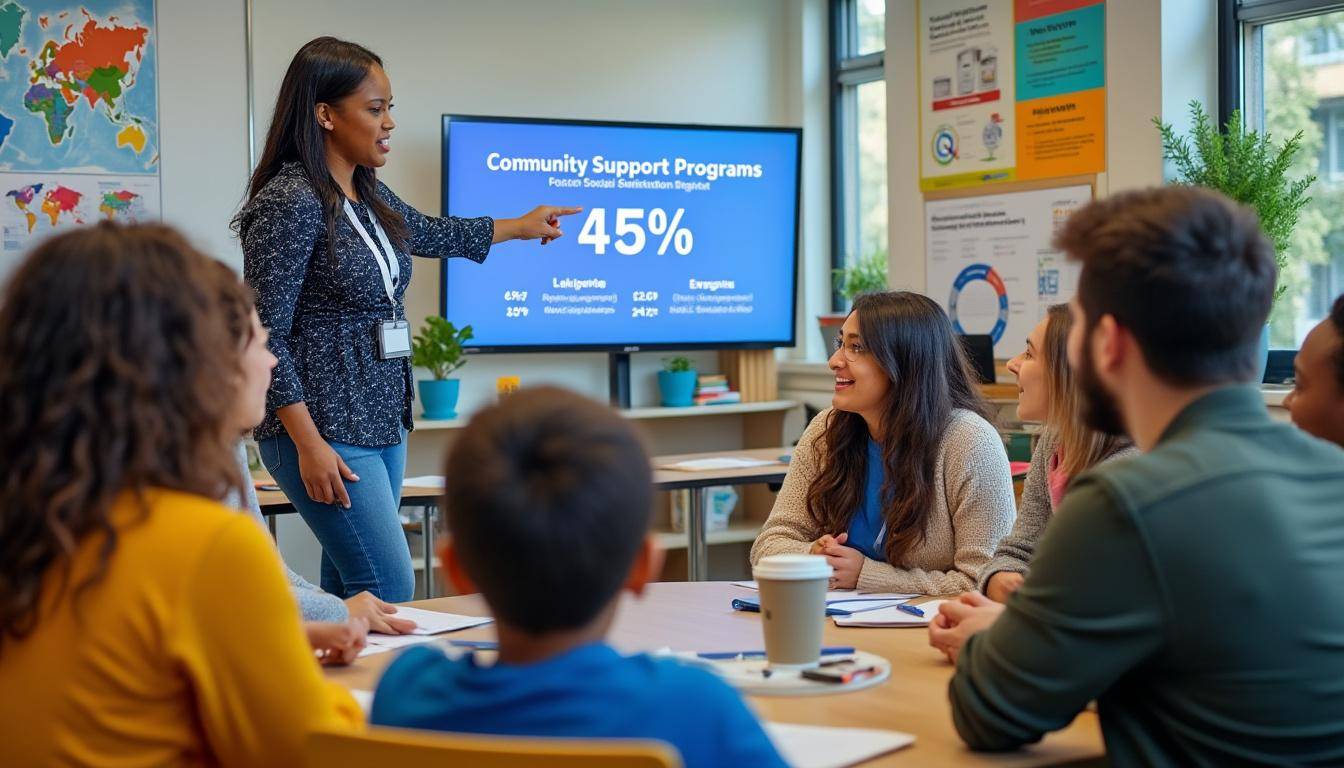The newly approved legislation championed by former President Trump is poised to significantly alter the framework of social safety nets crucial to millions of students across the United States. With sweeping changes targeting Medicaid, SNAP benefits, immigration enforcement, and the introduction of a private school voucher program, this policy shift may redefine how educational institutions function and how families engage with government assistance programs. These modifications carry profound implications for educational equity, student welfare, and the broader context of education policy in 2025.
How Trump’s Legislation Could Transform Students’ Access to Social Safety Net Programs
The Trump legislation introduces historic cuts to Medicaid, a vital source of funding supporting student health services in schools nationwide. Medicaid currently assists roughly 37 million children and is the fourth-largest federal funding source for school districts. Reductions in Medicaid could cripple school budgets, forcing difficult decisions such as staff layoffs and cuts to services that support students’ mental health and disabilities.
- Medicaid funds school nurses, psychologists, and speech therapists in nearly 90% of surveyed U.S. schools.
- Specialized equipment for students with disabilities is often purchased through Medicaid funding.
- Rural schools may experience a more severe impact as they often rely heavily on Medicaid-supported health care services.
Such budgetary constraints can disrupt essential support systems that cater to student well-being, thereby influencing both academic performance and social-emotional development. For more detailed analysis on how policy changes affect education, visit our discussion on the impact of the ‘Big Beautiful Bill’.
Reducing SNAP Benefits Could Limit Students’ Nutritional Support in Schools
Beyond healthcare, the Trump legislation enacts stringent modifications to the Supplemental Nutrition Assistance Program (SNAP), affecting over 13 million children nationwide. The new restrictions could disqualify many families from benefits by mandating work requirements, denying eligibility for certain refugee and asylum populations, and raising state contributions to the program.
- Leaving SNAP may lead to fewer children qualifying for free school breakfast and lunch.
- Schools depend on high SNAP enrollment to secure federal reimbursements that support universal free meals.
- Reduced meal programs could affect students’ academic focus and wellbeing, especially those from low-income families.
This shift presents a double challenge: increased food insecurity at home coupled with reduced nutritional support during the school day. To understand how family involvement and social welfare reforms connect, explore strategies to strengthen family involvement in education.
Policy Impact of Immigration Enforcement and Its Ripple Effects on Students
The legislation allocates an additional $31 billion to immigration enforcement agencies, thereby signaling an increase in arrests and deportations. This funding surge includes state and local grants to bolsters immigration-related policing efforts. Such measures have tangible consequences on school communities, fostering climates of fear and instability for immigrant children.
- Schools already devote resources to ensuring safety and addressing attendance disruptions caused by immigration raids.
- Research has shown these raids increase student absenteeism, especially among younger children in affected regions.
- Effects extend beyond attendance to mental and physical health challenges, influencing school environments.
The increasing tension highlights the intersection of education policy and broader social issues. For an in-depth examination of how immigration policies affect school attendance, see our coverage at immigration raids and school attendance.
A New Voucher Program Could Reshape School Choice and Educational Equity
Embedded quietly within the bill is the creation of a tax-credit scholarship program designed to fund private school tuition nationwide. Advocates hail this as a victory for expanded school choice, but the initiative’s optional nature allows states to opt out, likely limiting its reach. Conservative-led states may embrace the program, while Democrat-led states could decline participation, preserving public school funding structures.
- Taxpayers can claim a $1,700 credit by donating to scholarship organizations that aid private schooling.
- The program lacks a federal cap on expenditures, introducing fiscal uncertainty.
- Private school advocates see this as a step toward broadening educational options, amid concerns about deepening inequalities.
This new school choice component may intensify debates over educational equity and resource allocation. For more on this development, visit the Big Beautiful Bill and school choice.
Additional Measures Affecting Students’ Educational Opportunities and Family Resources
The legislation also expands Pell Grants to include short-term workforce training programs, signaling a shift toward bridging college affordability and career readiness. Starting in the 2026-27 academic year, aid will support programs lasting eight to 15 weeks that confer credentials or academic credit relevant to in-demand fields.
- Workforce Pell Grants aim to prepare students for high-skill, high-wage careers aligned with federal vocational education standards.
- State authorities will determine which programs qualify, offering tailored local solutions.
- Initial funding projections are modest but represent a progressive attempt to expand educational pathways.
Meanwhile, the proposed increase in the child tax credit from $2,000 to $2,200 annually has sparked controversy, as many low-income families will remain excluded due to unchanged eligibility conditions. This raises concerns about the policy’s effectiveness in supporting the most vulnerable children.
- Approximately 19 million children live in families unlikely to benefit fully from the revised credit.
- Without inflation adjustments, the credit’s real value has declined since 2018.
- The rollback from pandemic expansions has been described as a policy “pendulum swing” away from supporting low-income families.
To explore career pathways linked to education policy and workforce readiness, readers can consult our guide to career paths.
These changes represent a profound shift in how students interact with the social safety net, influencing everything from health and nutrition to family security and educational opportunity. The intersection of welfare reform with education policy underscores the crucial need for awareness and advocacy as communities navigate these policy shifts.


